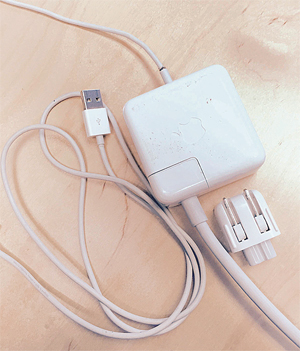- California Assembly OKs highest minimum wage in nation
- S. Korea unveils first graphic cigarette warnings
- US joins with South Korea, Japan in bid to deter North Korea
- LPGA golfer Chun In-gee finally back in action
- S. Korea won’t be top seed in final World Cup qualification round
- US men’s soccer misses 2nd straight Olympics
- US back on track in qualifying with 4-0 win over Guatemala
- High-intensity workout injuries spawn cottage industry
- CDC expands range of Zika mosquitoes into parts of Northeast
- Who knew? ‘The Walking Dead’ is helping families connect
Aluminum battery that charges in a minute
 Stanford researchers have developed the first flexible battery made of aluminum. The anode, or the negatively charged side, is composed of aluminum while the cathode, or the positively charged side, is composed of graphite.
Stanford researchers have developed the first flexible battery made of aluminum. The anode, or the negatively charged side, is composed of aluminum while the cathode, or the positively charged side, is composed of graphite.
Stanford’s accidental discovery of using graphite as a cathode has allowed them to create this flexible battery.
Researchers hope this innovation will serve as a viable replacement for the popular lithium-ion batteries. These aluminum batteries would be affordable, safe, and fast-charging. The aluminum batteries can be recharged in a minute unlike the hours needed to charge a typical lithium-ion battery.
The aluminum battery is also malleable; it can bend, fold, and even have a hole drilled through it without any detriment to its usage.
The aluminum batteries are also safer than lithium-ion batteries. These aluminum batteries will not catch on fire when exposed to heat or punctured. The electrolyte, which is the medium through which the electrical charge flows and causes the chemical reaction, is just liquid salt and therefore serves as the reason behind these batteries’incombustibility. Moreover, the aluminum battery is more durable compared to the lithium-ion battery.
While a lithium-ion battery can be charged reliably only about 1,000 times, an aluminum battery can be charged almost 7,500 times. However, the aluminum battery has only half the voltage and energy density of the typical lithium-ion battery.
The current aluminum battery can only produce 2 volts compared to the 3.6 volts that a lithium-ion battery yields. Aluminum cells can only carry 40 watt-hours per kilogram while a typical lithium-ion has an energy density of 100-260 watt-hours per kilogram.
Despite these numbers, the Stanford research team is confident that they will be able to increase the voltage and energy density as they continue to make improvements to the graphite cathode. These aluminum batteries can potentially replace the batteries found in smartphones, smartwatches, laptops, and tablets.
 |
John Chae Cerritos High School 10th Grade |












kelly
November 27, 2017 at 12:41 PM
yes..I like the basic concepts behind Second Life but it seems incredibly outdated and when I played it was intensely non-intuitive / user friendly to an extent that made EVE look like a game for toddlers. thanks from
togel online